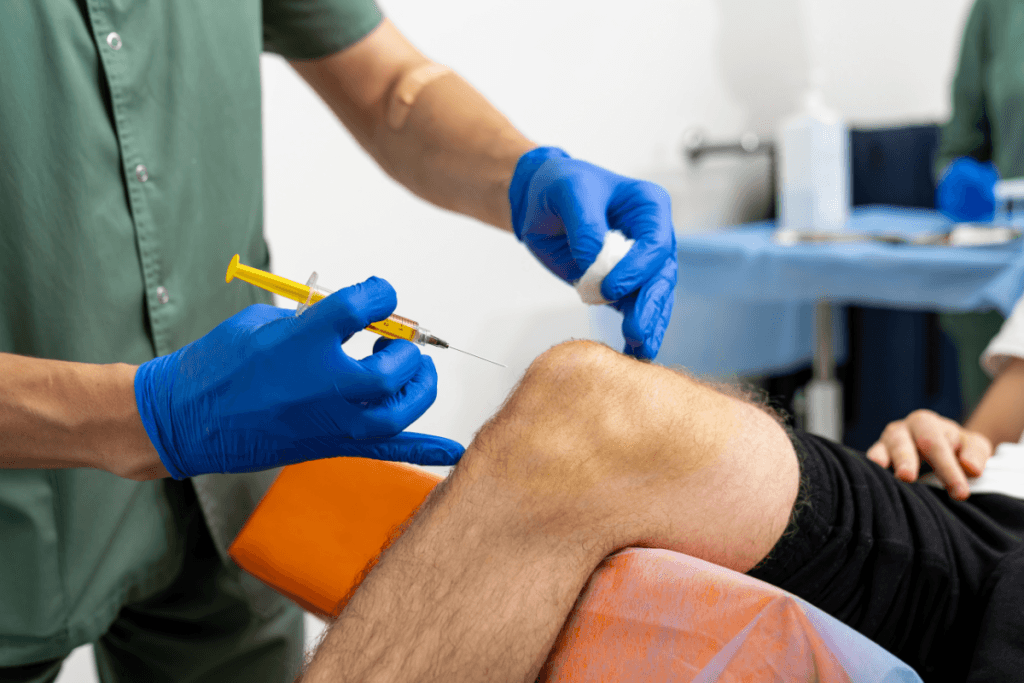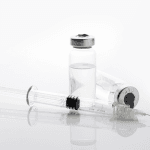Intra-articular hyaluronic acid injections (viscosupplementation, or “gel injections”) are used in some patients with osteoarthritis-related joint pain, most often in the knee. In clinic operations, the recurring question is synvisc vs durolane: what is meaningfully different, and what should your team prepare for on injection day and after. This guide focuses on practical clinic-facing considerations, not prescribing decisions.
Supply is limited to licensed clinics and healthcare professionals.
For background on the broader category, see Types Of Gel Injections and Knee Pain Treatment Options. These references help standardize terminology, documentation, and patient education across brands.
Key Takeaways
- Confirm product labeling before changing workflows or counseling.
- Plan for variability in onset, duration, and patient response.
- Document technique, lot numbers, and post-injection instructions consistently.
- Set a clear pathway for expected flares versus red-flag symptoms.
Where Viscosupplementation Fits in Knee OA Care
Viscosupplement products are hyaluronic acid–based (or modified hyaluronan-based) preparations injected into a synovial joint. Hyaluronic acid is a normal component of synovial fluid. In plain language, these injections aim to improve joint lubrication and cushioning. In practice, clinics use them as one option in a broader osteoarthritis plan. That plan may also include activity modification, physical therapy, oral or topical analgesics, bracing, weight management, or other intra-articular injections.
Guideline positions differ by organization and update cycle, and payer policies also vary. For that reason, operational alignment matters as much as clinical selection. Your staff needs a consistent intake checklist, an informed consent process, and a repeatable follow-up pathway. If your site also administers corticosteroid injections, keep your counseling distinct and avoid mixing concepts; Cortisone And HA Injections is a useful internal orientation reference.
Is a hyaluronic acid injection a steroid?
This confusion shows up in intake calls and chart messages. A hyaluronic acid (HA) injection is not a steroid. Steroid injections use corticosteroids to reduce inflammation. HA products are viscosupplements, intended to supplement the joint’s fluid properties. That distinction affects medication reconciliation, expectations about symptom trajectory, and how you document prior therapies. It also affects patient education materials, since “steroid shot” language can lead to incorrect assumptions about side effects and activity restrictions.
Why it matters: Clear terminology reduces post-visit calls and improves documentation quality.
synvisc vs durolane: Practical Comparison for Clinics
Most comparisons are really about three clinic-relevant factors: formulation differences, injection schedule on the label, and patient-specific contraindications or sensitivities. Avoid relying on online “reviews” as primary evidence. Synvisc injection reviews and Durolane knee injection reviews are often influenced by expectations, disease severity, and inconsistent follow-up. Use structured patient-reported outcomes and standardized follow-up intervals instead.
Some HA products are described as avian-derived (often associated with “rooster comb” sourcing), while others are produced through bacterial fermentation. This matters for allergy history and how you frame ingredient questions. For patient-friendly language on sourcing, see Rooster Comb Injections. If your team is clarifying brand variants, Comparing Synvisc And Synvisc-One can help align internal terminology.
| Comparison Point | What To Confirm In Label/IFU | Why Clinics Care |
|---|---|---|
| Origin and excipients | Animal-derived vs fermentation; allergy warnings | Intake screening and informed consent consistency |
| Administration schedule | Single-injection vs multi-injection regimen | Scheduling templates, inventory planning, billing cadence |
| Device format | Prefilled syringe, packaging, storage requirements | Rooming workflow, cold-chain procedures where applicable |
| Technique notes | Aspiration guidance, needle/joint approach notes | Procedure note standardization and training |
| Warnings and precautions | Post-injection activity guidance; adverse event language | Aftercare sheets and triage scripts |
When you build a formulary, keep the “compare” conversation grounded in operational fit. For example, you may link product references in your internal protocol for staff orientation, such as Synvisc-One Prefilled Syringe and Durolane Prefilled Syringe. Use these as identifiers for stocking and documentation, not as substitutes for the official instructions for use.
Procedure and Room Flow: Standardizing the Injection Visit
Even when clinicians vary in technique, clinics benefit from a consistent “visit skeleton.” That includes pre-visit screening, a standardized consent discussion, aseptic setup, and a templated procedure note. Many sites also standardize whether they use landmark guidance or imaging guidance, and how they document the approach. If you operate multiple locations, small differences can create documentation gaps that show up later in audits or adverse event reviews.
When teams evaluate synvisc vs durolane operationally, they often discover that the biggest differences are not “in the room,” but around scheduling and aftercare. Still, staff should know the brand name administered, the joint, laterality, and any aspiration performed. Keep your documentation aligned with your payer and compliance requirements, and ensure product identifiers (including lot details) are captured in a consistent place in the chart.
Products are sourced through vetted distributors for traceable supply.
Post-injection instructions that reduce callbacks
Patients commonly ask what should I do after synvisc injection, or whether activity is allowed. Your clinic’s handout should be aligned with labeling and your medical director’s protocol. In general, many clinics advise patients to monitor for transient soreness and to avoid unusual joint stress immediately after the procedure. Do not promise a specific timeline for relief. If you set expectations that symptom change may be gradual, you reduce “it didn’t work” messages during the first days after injection.
Quick tip: Use one approved script for “expected soreness” versus “call us today.”
Recovery, Function, and Follow-Up Planning
Recovery after durolane injection (and other HA injections) is usually framed as a short period of local care plus a planned follow-up. Patients also ask can you walk after durolane injection. Many clinics allow normal walking, but advise avoiding high-impact or unusually strenuous activity right away, based on labeling and clinician preference. From an operational standpoint, it helps to schedule a follow-up touchpoint that matches your outcomes tracking, not just your calendar availability.
Another frequent question is how long does it take for durolane injection to work. Response timing varies across individuals, disease severity, and expectations, and it may differ by product and technique. Avoid quoting a single “success rate” number in patient materials. Durolane injection success rate and similar phrases are often searched, but published results depend on endpoints and study populations. A safer clinic message is that some patients report improvement over time, while others may have limited benefit, and that follow-up helps determine next steps.
Side Effects, Flares, and Red-Flag Symptoms to Document
All intra-articular procedures can cause short-term injection-site symptoms. Clinics should be ready for calls about durolane side effects, monovisc side effects, or synvisc injection side effects, even when the symptoms are nonspecific. Typical reports include localized pain, swelling, warmth, or stiffness in the injected joint. Some patients describe a “flare” where the joint feels worse for a short period. This is where your triage script matters as much as your clinical protocol.
Severe pain after durolane injection and knee pain worse after durolane injection are also common search terms. They can reflect a spectrum from transient inflammation to issues that need prompt assessment. Your documentation should capture symptom onset, severity, fever status, mobility limits, and any visible joint changes. Ensure staff know your escalation pathway for possible infection, allergic-type reactions, or other complications. Keep instructions general and aligned with your clinical governance, since management is clinician-directed.
Procurement, Documentation, and Inventory Controls
Viscosupplement administration is as much a documentation exercise as a procedure. Audits often focus on traceability and correct product identification. Build your process so the right NDC/identifier, lot number, expiration date, laterality, and administering clinician are recorded every time. Align storage and handling steps with manufacturer requirements and your facility policy. If your organization stocks hyaluronic acid products for other service lines, consider keeping category-level inventory workflows consistent across departments; some practices use a unified hub like the Dermal Fillers Category structure to separate clinical use-cases while maintaining consistent receiving logs.
Inventory focuses on authentic, brand-name medical products.
Clinic documentation checklist (high-level)
- Product identity recorded
- Lot and expiration logged
- Indication documented per policy
- Consent captured consistently
- Technique elements templated
- Aftercare handout version noted
- Follow-up plan scheduled
Procurement teams also benefit from a simple “receiving to administration” map. Confirm who checks packaging integrity, who reconciles lot numbers into the EHR, and where temperature excursions (if applicable) are documented. Policies vary, so it is worth agreeing on one internal owner for each step, even in small practices.
Comparing Other Options: Monovisc, Euflexxa, Orthovisc, Hyalgan, Hymovis
Many clinics do not evaluate just two products. Patients and referring clinicians often ask about monovisc vs synvisc, synvisc vs euflexxa, durolane vs euflexxa, and orthovisc vs monovisc vs synvisc. Keep your comparisons anchored to label-defined regimen, contraindications, and your clinic’s ability to execute consistent follow-up. Avoid implying superiority based on anecdote, and be cautious about drawing conclusions from “reviews” alone.
If you need internal references for staff education, consider linking comparative explainers such as Euflexxa Vs Synvisc, Orthovisc Vs Synvisc, and Hyalgan Vs Synvisc. When a product is part of your stocked formulary, staff may also benefit from an internal identifier link like Monovisc Prefilled Syringe to reduce selection errors during prep.
From a safety and triage standpoint, your approach should be consistent across brands. That means one side effect handout and one triage pathway, with product-specific nuances added only when clearly supported by labeling. This is also where comparisons like hymovis vs synvisc belong: not as marketing claims, but as a structured review of administration schedule, device handling, and contraindication screening.
Common operational pitfalls (and how to avoid them)
- Inconsistent brand naming
- Missing lot documentation
- Unclear follow-up ownership
- Overpromised timelines
- Mixed steroid vs HA language
One more point: questions like how many durolane injections can you have depend on labeling, payer policy, and clinician judgment. Operationally, your job is to ensure repeat courses are tracked, prior dates are searchable, and authorizations (when required) are documented. That prevents avoidable delays and reduces claim denials tied to incomplete history.
Authoritative Sources
For clinic policies and patient education, prioritize primary sources over summaries. Start with professional guidelines and official product labeling. Guidance can change as evidence updates, so schedule periodic protocol reviews and align your materials with the most current versions.
These references are commonly used for evidence context and care standards: AAOS knee osteoarthritis clinical practice guideline and ACR/Arthritis Foundation osteoarthritis guidance. Use them to inform high-level pathways, while relying on manufacturer labeling for product-specific administration and safety language.
In day-to-day practice, the most durable improvements come from standardization. Define your intake screening, consent language, documentation fields, and triage scripts. Then audit charts to confirm the workflow holds up when the schedule is busy.
This content is for informational purposes only and is not a substitute for professional medical advice.







